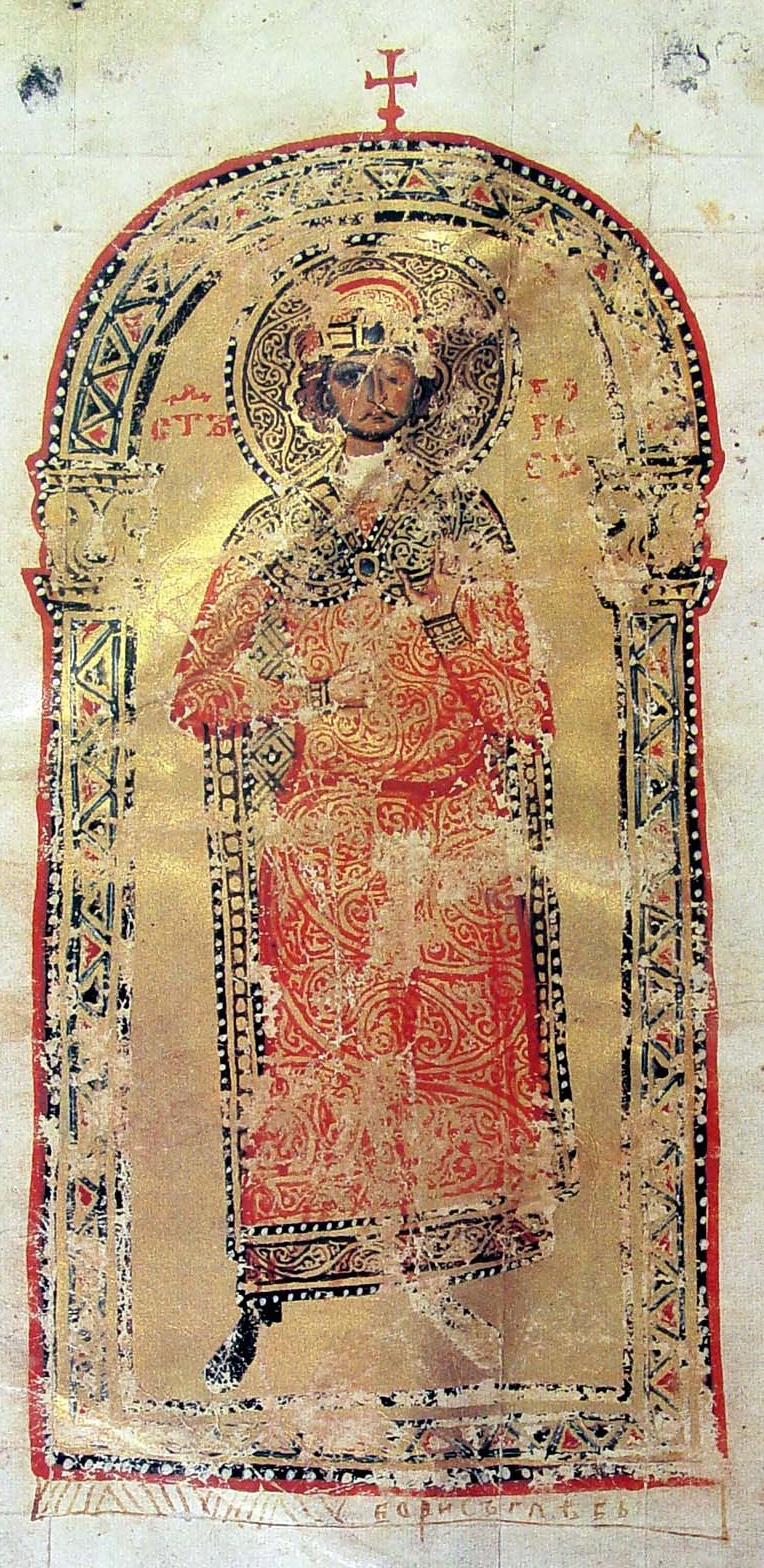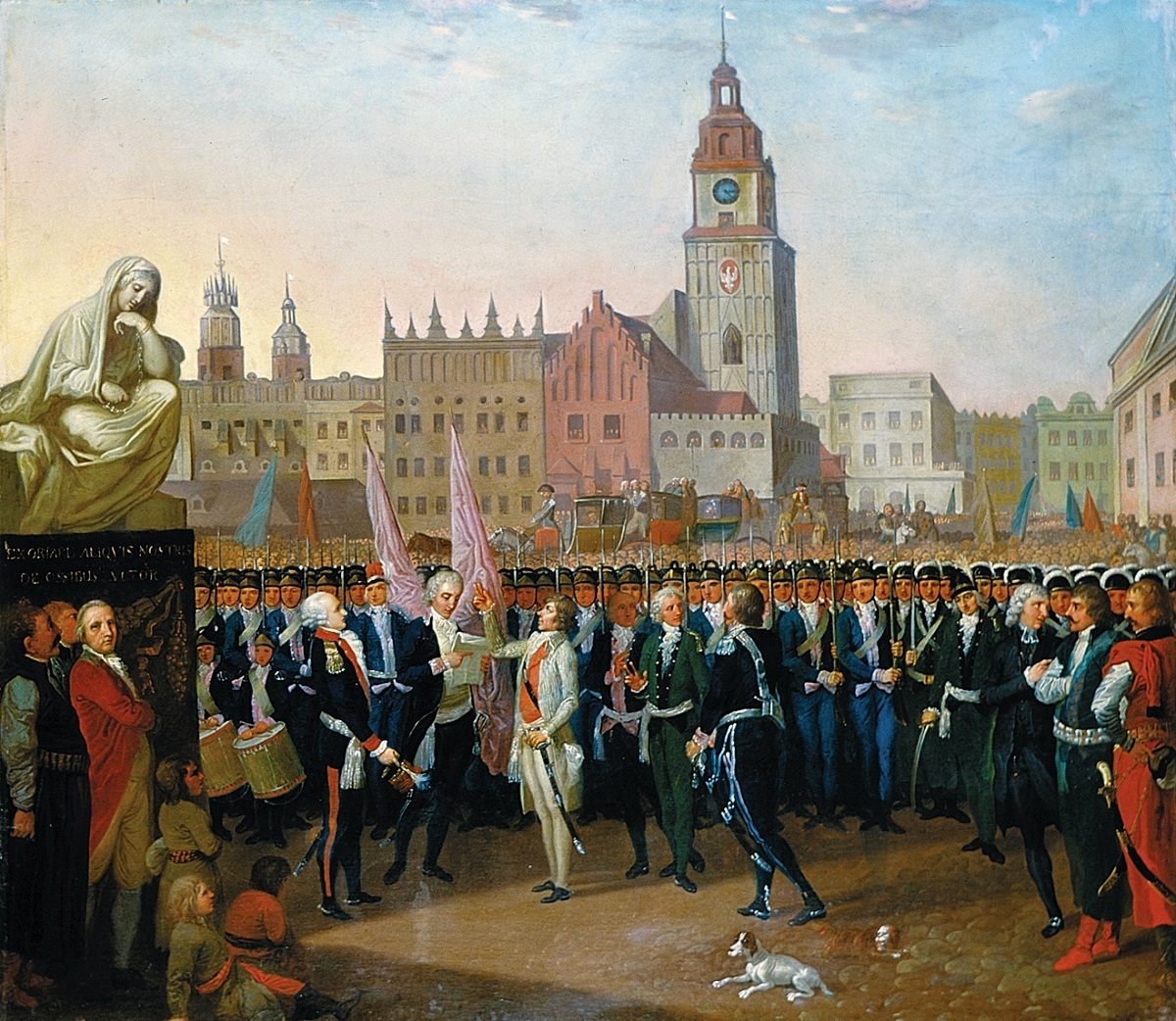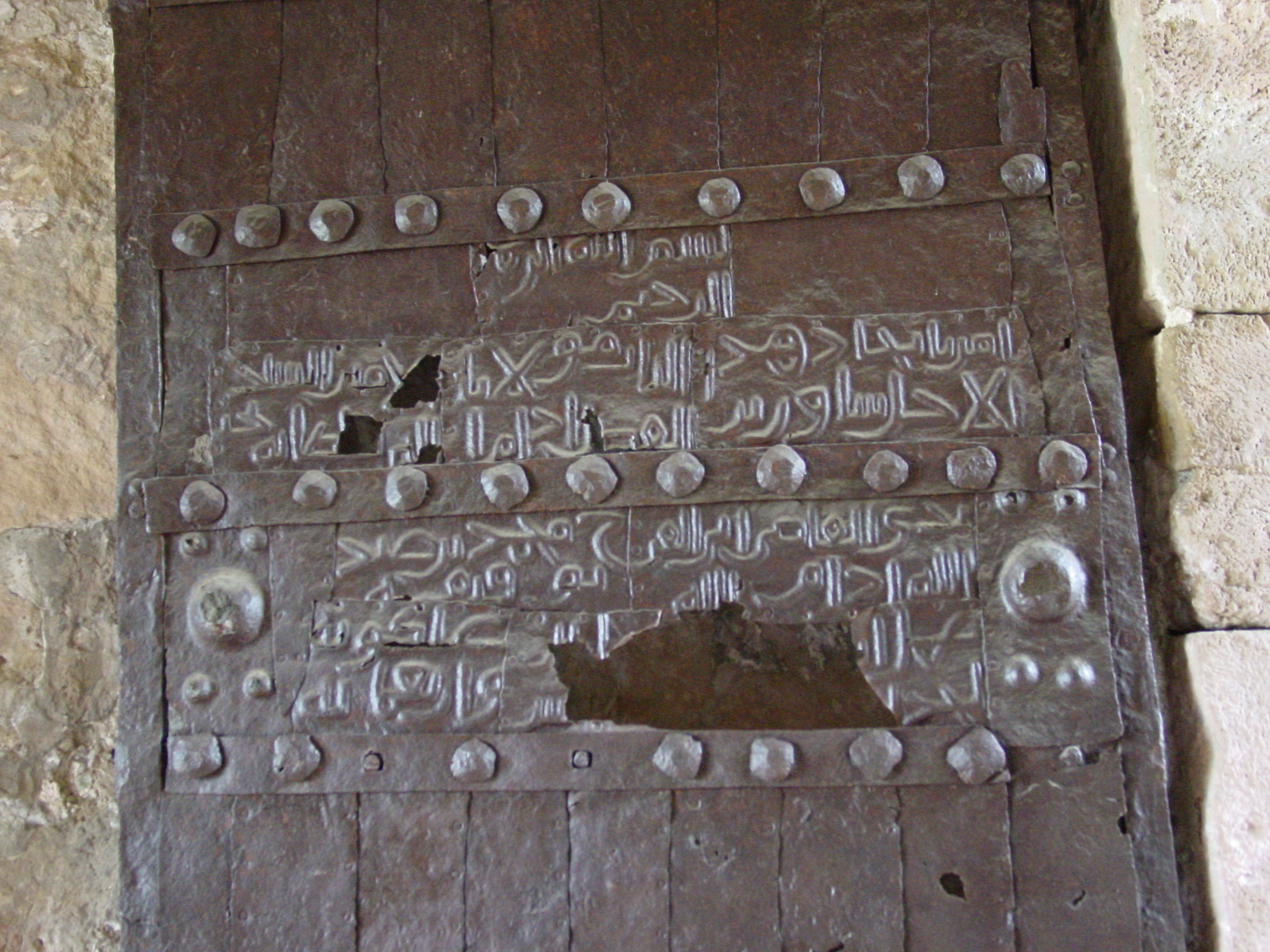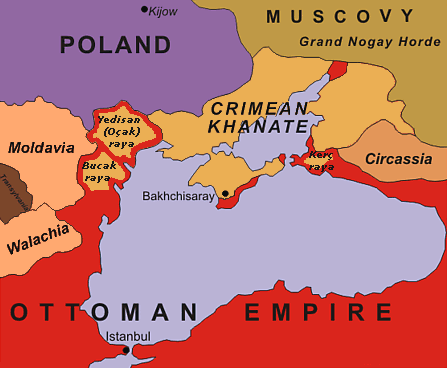|
Pavel Tsitsianov
Prince Pavel Dmitriyevich Tsitsianov (; –) was an Imperial Russian general of Georgian noble origin who played a prominent role in the Russian conquest of the South Caucasus. He served as the Russian Commander-in-chief in the Caucasus from 1802 to 1806 and commanded Russian forces in the Russo-Persian War of 1804–1813 until his assassination near Baku in 1806. Born in Moscow to a Georgian noble family that had lived in Russia for two generations, he entered military service at a young age and fought in the Russo-Turkish War of 1768–1774, the 1794 Polish uprising and the Persian expedition of 1796. Tsar Alexander I appointed him commander of Russian forces in the Caucasus in 1802. He solidified Russian rule in the region, compelling local rulers and communities to submit to the Tsar and often campaigning against them. He expanded Russian possessions south of the Caucasus westward to the Black Sea and continued Russia's southward expansion. He successfully captured the c ... [...More Info...] [...Related Items...] OR: [Wikipedia] [Google] [Baidu] |
Knyaz
A , also , ''knjaz'' or (), is a historical Slavs, Slavic title, used both as a royal and noble title in different times. It is usually translated into English language, English as 'prince', 'king' or 'duke', depending on specific historical context and the potentially known Latin equivalents at the time; the word was originally derived from the Proto-Germanic language, common Germanic ('king'). Feminine forms of the word may be divided into two groups: * "Princess", be it princess consort (wife of a reigning prince), princess regnant (reigning princess ''suo jure''), or princess regent (reigning on behalf of an underage prince, usually her son after her husband's death) ** Belarusian language, Belarusian: ''kniahinia'' (княгіня) ** Bulgarian language, Bulgarian and Russian language, Russian: () ** Slovene language, Slovene, Serbo-Croatian, and Macedonian language, Macedonian: (in Serbian Cyrillic alphabet, Serbian and Macedonian alphabet, Macedonian Cyrillic: ) ** ... [...More Info...] [...Related Items...] OR: [Wikipedia] [Google] [Baidu] |
Kościuszko Uprising
The Kościuszko Uprising, also known as the Polish Uprising of 1794, Second Polish War, Polish Campaign of 1794, and the Polish Revolution of 1794, was an uprising against the Russian and Prussian influence on the Polish–Lithuanian Commonwealth, led by Tadeusz Kościuszko in Poland-Lithuania and the Prussian partition in 1794. It was a failed attempt to liberate the Polish–Lithuanian Commonwealth from external influence after the Second Partition of Poland (1793) and the creation of the Targowica Confederation. Background Decline of the Commonwealth By the early 18th century, the magnates of Poland and Lithuania controlled the state – or rather, they managed to ensure that no reforms would be carried out that might weaken their privileged status (the " Golden Freedoms"). Through the abuse of the '' liberum veto'' rule which enabled any deputy to paralyze the Sejm (Commonwealth's parliament) proceedings, deputies bribed by magnates or foreign powers or those sim ... [...More Info...] [...Related Items...] OR: [Wikipedia] [Google] [Baidu] |
Qajar Iran
The Guarded Domains of Iran, alternatively the Sublime State of Iran and commonly called Qajar Iran, Qajar Persia or the Qajar Empire, was the Iranian state under the rule of the Qajar dynasty, which was of Turkic peoples, Turkic origin,Cyrus Ghani. ''Iran and the Rise of the Reza Shah: From Qajar Collapse to Pahlavi Power'', I. B. Tauris, 2000, , p. 1William Bayne Fisher. ''Cambridge History of Iran'', Cambridge University Press, 1993, p. 344, Dr Parviz Kambin, ''A History of the Iranian Plateau: Rise and Fall of an Empire'', Universe, 2011, p.36online edition specifically from the Qajar (tribe), Qajar tribe, from 1789 to 1925. The Qajar family played a pivotal role in the Unification of Iran (1779–1796), deposing Lotf 'Ali Khan, the last Shah of the Zand dynasty, and re-asserted Iranian sovereignty over large parts of the Caucasus. In 1796, Agha Mohammad Khan Qajar seized Mashhad with ease, putting an end to the Afsharid dynasty. He was formally crowned as Shah after his Batt ... [...More Info...] [...Related Items...] OR: [Wikipedia] [Google] [Baidu] |
Ganja, Azerbaijan
Ganja (; ) is Azerbaijan's List of cities in Azerbaijan, third largest city, with a population of around 335,600.Azərbaycan Respublikası. — 2. Azərbaycan Respublikasının iqtisadi və inzibati rayonları. — 2.4. Azərbaycan Respublikasının iqtisadi və inzibati rayonlarının ərazisi, əhalisinin sayı və sıxlığı, səhifə 66. /Azərbaycanın əhalisi (statistik bülleten) Müəllifi: State Statistics Committee, Azərbaycan Respublikasının Dövlət Statistika Komitəsi. Buraxılışa məsul şəxs: Rza Allahverdiyev. Bakı — 2015, 134 səhifə. The city has been a historic and cultural center throughout most of its existence. It was the capital of the Ganja Khanate until 1804; after Qajar Iran ceded it to the Russian Empire following the Treaty of Gulistan in 1813, it became part of the administrative divisions of the Georgia Governorate, Georgia-Imeretia Governorate, Tiflis Governorate, and Elizavetpol Governorate. Following the dissolution of the Russian Emp ... [...More Info...] [...Related Items...] OR: [Wikipedia] [Google] [Baidu] |
Persian Expedition Of 1796
The Persian expedition of Catherine the Great of 1796 , like the Persian expedition of Peter the Great (1722–1723), was one of the Russo-Persian Wars of the 18th century which did not entail any lasting consequences for either belligerent. The last decades of the 18th century were marked by continual strife between rival claimants to the Peacock Throne. Empress Catherine the Great of Russia () took advantage of the disorder to consolidate her control over the weak polities of the Caucasus, which was, for swaths of it, an integral Persian domain. The kingdom of Georgia, a subject of the Persians for many centuries, became a Russian protectorate in 1783, when King Erekle II signed the Treaty of Georgievsk, whereby the Empress promised to defend him in the case of Iranian attack. The shamkhals of Tarki followed this lead and accepted Russian protection three years later. With the enthronement of Agha Mohammad Khan as Shah of Persia in 1794 the political climate changed ... [...More Info...] [...Related Items...] OR: [Wikipedia] [Google] [Baidu] |
Russo-Turkish War (1768–1774)
The Russo-Turkish wars ( ), or the Russo-Ottoman wars (), began in 1568 and continued intermittently until 1918. They consisted of twelve conflicts in total, making them one of the longest series of wars in the history of Europe. All but four of these wars ended in losses for the Ottoman Empire, which was undergoing a period of stagnation and decline. Conversely, they showcased the ascendancy of the Russian Empire as a significant European power after Peter the Great oversaw extensive modernization efforts in the early 18th century. Ultimately, however, the end of the Russo-Turkish wars came about with the dissolution of the two belligerents' respective states as a consequence of World War I: the Russian Empire collapsed in 1917 and was ultimately succeeded by the Union of Soviet Socialist Republics in 1922; while the Ottoman Empire was partitioned between 1918 and 1922 and succeeded by the Republic of Turkey in 1923. History Initial and intermediate phases (1568–1739) ... [...More Info...] [...Related Items...] OR: [Wikipedia] [Google] [Baidu] |
South Caucasus
The South Caucasus, also known as Transcaucasia or the Transcaucasus, is a geographical region on the border of Eastern Europe and West Asia, straddling the southern Caucasus Mountains. The South Caucasus roughly corresponds to modern Armenia, Georgia (country), Georgia, and Azerbaijan, which are sometimes collectively known as the Caucasian States. The total area of these countries measures about . The South Caucasus and the North Caucasus together comprise the larger Caucasus geographical region that divides Eurasia. The South Caucasus is a dynamic and complex region where the three countries have pursued distinct geopolitical pathways. Geography The South Caucasus spans the southern portion of the Caucasus Mountains and their lowlands, straddling the border between the continents of Europe and Asia, and extending southwards from the southern part of the Main Caucasian Range of southwestern Russia to the Turkey, Turkish and Armenian borders, and from the Black Sea in the west ... [...More Info...] [...Related Items...] OR: [Wikipedia] [Google] [Baidu] |
Georgians
Georgians, or Kartvelians (; ka, ქართველები, tr, ), are a nation and Peoples of the Caucasus, Caucasian ethnic group native to present-day Georgia (country), Georgia and surrounding areas historically associated with the Georgian kingdoms. Significant Georgian diaspora communities are also present throughout Georgians in Russia, Russia, Georgians in Turkey, Turkey, Georgians in Greece, Greece, Iranian Georgians, Iran, Georgians in Ukraine, Ukraine, the Georgian Americans, United States, and the European Union. Georgians arose from Colchis, Colchian and Kingdom of Iberia (antiquity), Iberian civilizations of classical antiquity; Colchis was interconnected with the Ancient Greece, Hellenic world, whereas Iberia was influenced by the Achaemenid Empire until Alexander the Great conquered it. In the early 4th century, the Georgians became one of the first to Christianization of Iberia, embrace Christianity. Currently, the majority of Georgians are Eastern Orthodo ... [...More Info...] [...Related Items...] OR: [Wikipedia] [Google] [Baidu] |
Reforms Of Russian Orthography
Russian orthography has been reformed officially and unofficially by changing the Russian alphabet over the course of the history of the Russian language. Several important reforms happened in the 18th–20th centuries. Early changes Old East Slavic adopted the Cyrillic script, approximately during the 10th century and at about the same time as the introduction of Eastern Christianity into the territories inhabited by the Eastern Slavs. No distinction was drawn between the vernacular language and the liturgical, though the latter was based on South Slavic languages, South Slavic rather than East Slavic languages, Eastern Slavic norms. As the language evolved, several letters, notably the ''yuses'' (Ѫ, Ѭ, Ѧ, Ѩ) were gradually and unsystematically discarded from both secular and church usage over the next centuries. The emergence of the centralized Russian state in the 15th and 16th centuries, the consequent rise of the state bureaucracy along with the development of the com ... [...More Info...] [...Related Items...] OR: [Wikipedia] [Google] [Baidu] |
Gold Sword For Bravery
The Gold Sword for Bravery () was a Russian award for bravery. It was set up with two grades on 27 July 1720 by Peter the Great, reclassified as a public order in 1807 and abolished in 1917. From 1913 to 1917 it was renamed the Saint George Sword (''Георгиевское оружие'') and considered one of the grades of the Order of St. George. Gallery File:Fedor Fedorovich von Berg (by J. M. Strzałecki).jpg, Field marshal Friedrich W. Rembert von Berg with the Gold Sword for Bravery File:Александр II стоит в мундире. 1878~1879г Левицкий(Невский28) (2) X e1.jpg, Tsar Alexander II of Russia with the Gold Sword for Bravery File:Kramskoy Alexander III.jpg, Tsar Alexander III of Russia with the Gold Sword for Bravery File:Mannerheim i rysk uniform.jpg, Baron Carl Gustaf Emil Mannerheim Baron Carl Gustaf Emil Mannerheim (, 4 June 1867 – 27 January 1951) was a Finnish military commander, aristocrat, and statesman. He served a ... [...More Info...] [...Related Items...] OR: [Wikipedia] [Google] [Baidu] |
Order Of Saint Alexander Nevsky
The Imperial Order of Saint Alexander Nevsky was an order of chivalry of the Russian Empire first awarded on by Empress Catherine I of Russia. History The introduction of the Imperial Order of Saint Alexander Nevsky was envisioned by Emperor Peter I of Russia (r. 1682–1721) to reward military bravery in battle. However, he died before he could create the order. It was established by Empress Catherine I of Russia, in memory of the deeds of Saint Alexander Nevsky, patron Saint of the Russian capital of Saint Petersburg, for defending Russia against foreign invaders. The order was originally awarded to distinguished Russian citizens who had served their country with honor, mostly through political or military service. It was first awarded on the occasion of the wedding of Grand Duchess Anna Petrovna of Russia and Charles Frederick, Duke of Holstein-Gottorp in 1725. A dozen guests received the reward, and the order quickly fell far behind the Order of Saint Andrew and the O ... [...More Info...] [...Related Items...] OR: [Wikipedia] [Google] [Baidu] |
Order Of Saint Vladimir
The Imperial Order of Saint Prince Vladimir () was an Imperial Russian order established on by Empress Catherine the Great, Catherine II in memory of the deeds of Vladimir I, Prince of Kiev, Saint Vladimir, the Grand Prince and the Baptizer of the Kievan Rus'. Grades The order had four degrees and was awarded for continuous civil and military service. People who had been awarded with the St. Vladimir Order for military merits bore it with a special fold on the ribbon – "with a bow". There was a certain hierarchy of Russian Orders. According to this, the First Class Order of Saint Vladimir was the second one—the first was the Saint George Order—by its significance. According to Russian laws on nobility, people who were awarded the Order of Saint Vladimir had the rights of hereditary nobility until the Emperor's decree of 1900 was issued. After this, only three first classes of the order gave such a right, the last one granting only personal nobility. Today, Grand ... [...More Info...] [...Related Items...] OR: [Wikipedia] [Google] [Baidu] |









